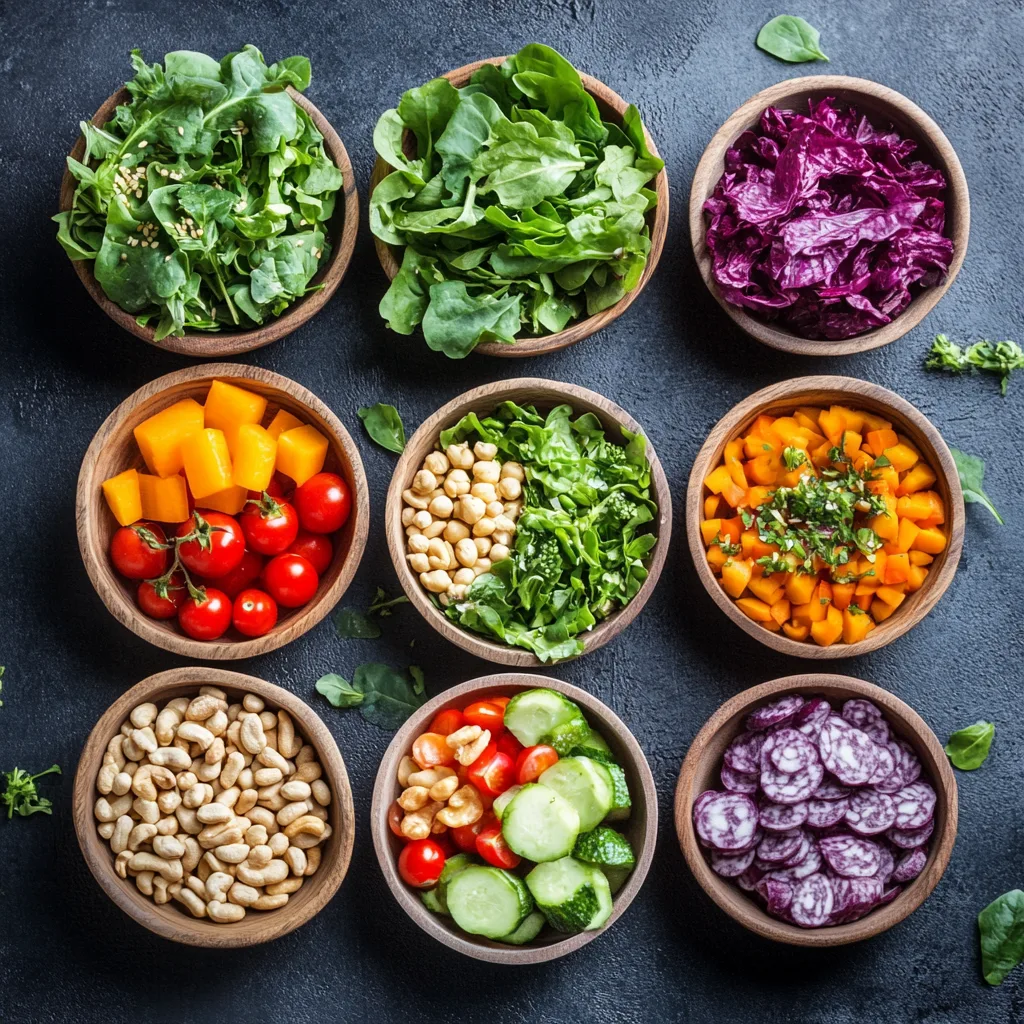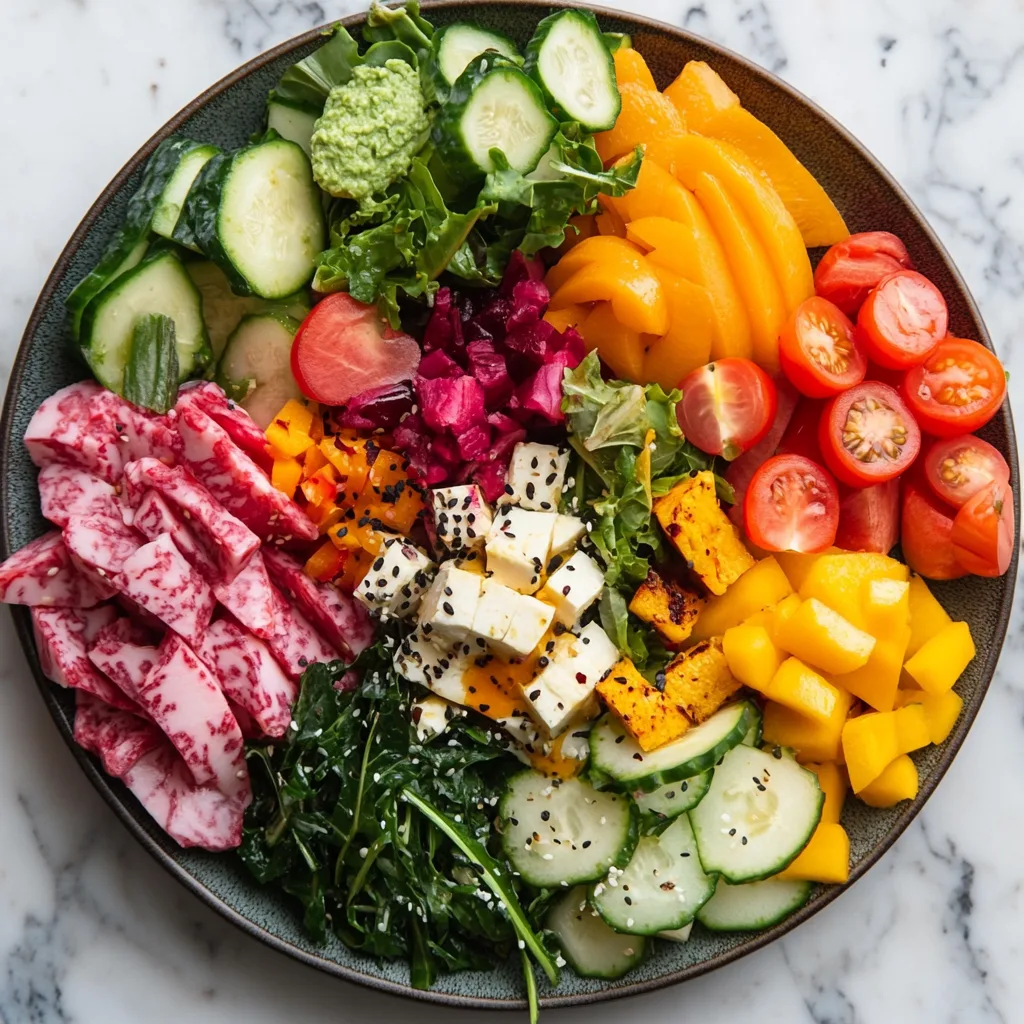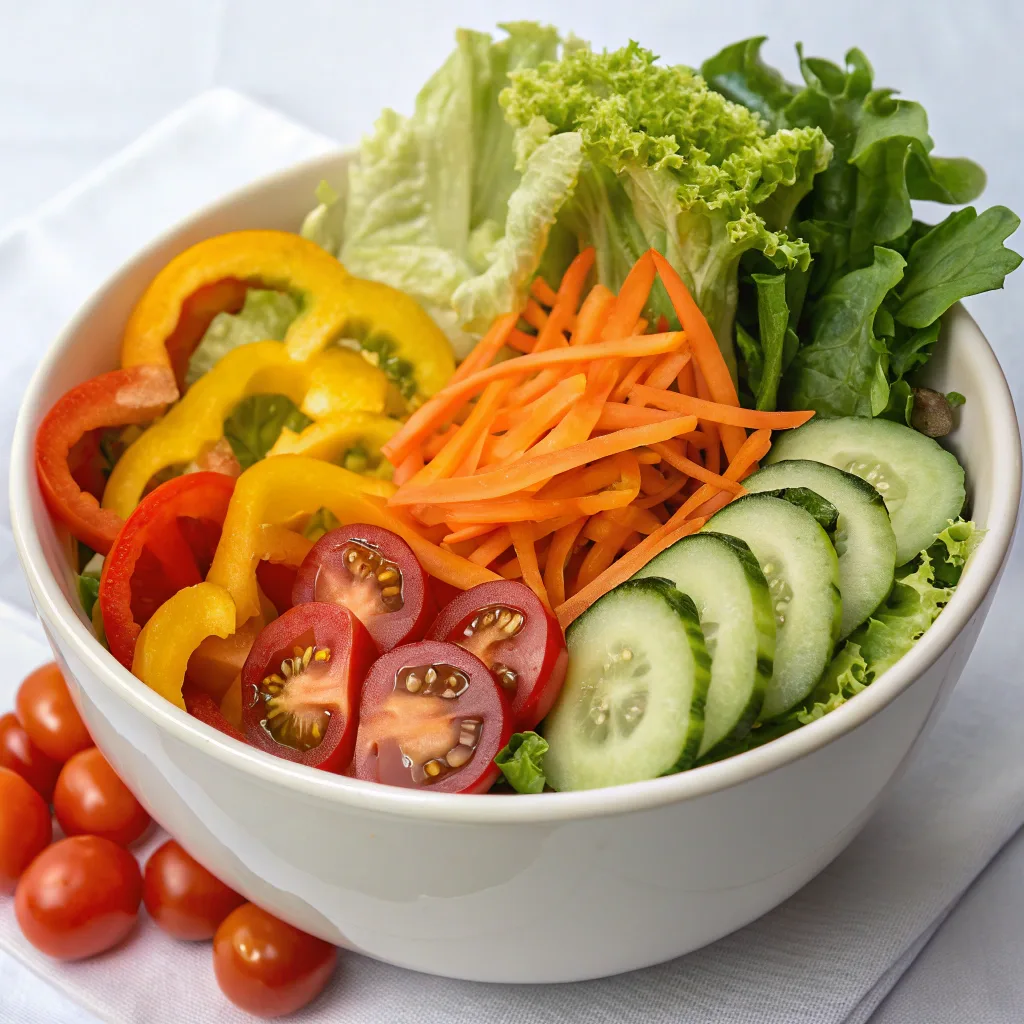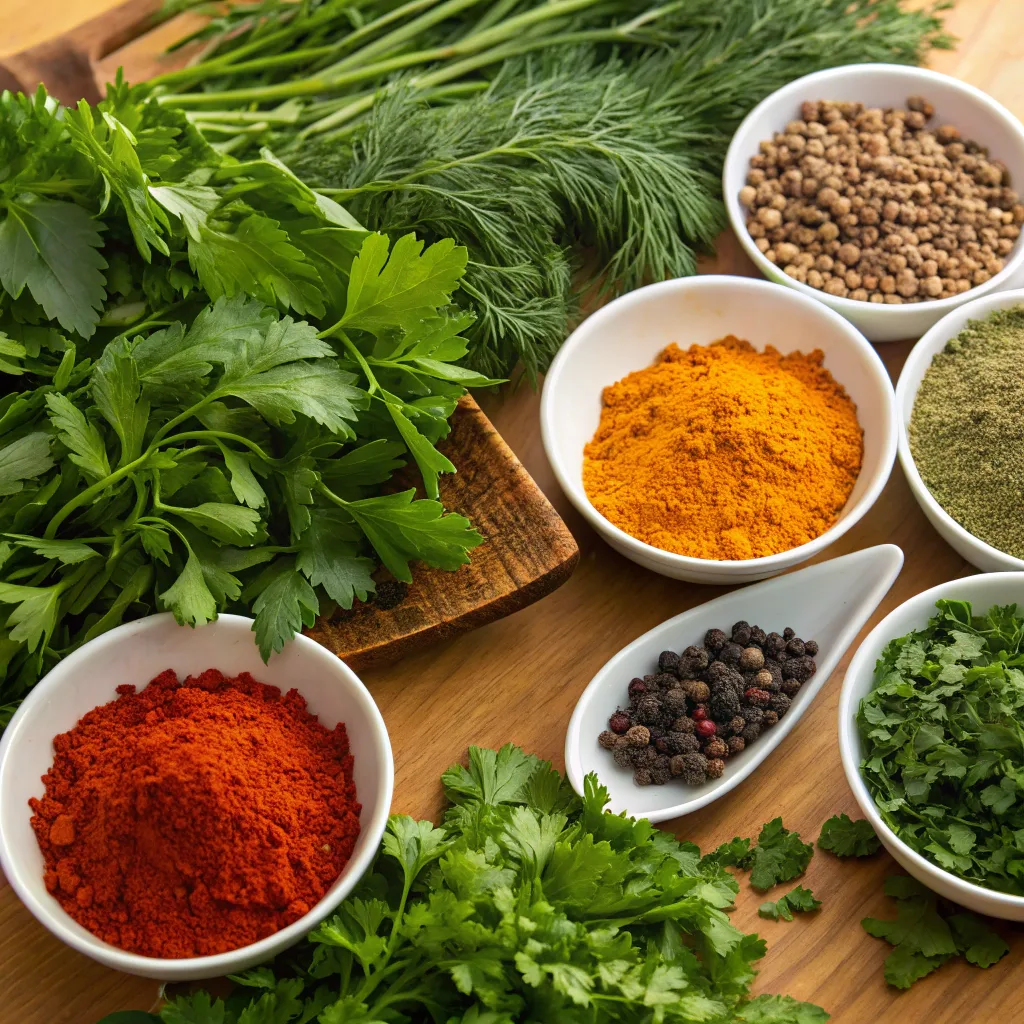What are the most common ingredients in salad?
Salads are a staple in many diets, offering a delightful mix of flavors and textures. But what are the most common ingredients in salad? A great salad combines fresh vegetables, fruits, proteins, and grains to create a balanced and satisfying meal. This article will try the most common ingredients found in salads, how they contribute to flavor and nutrition, and how you can build a salad that meets your taste preferences and health goals.
Introduction
When we think about salads, we often picture leafy greens, tomatoes, and cucumbers. However, what are the most common ingredients in salad? The answer goes far beyond these basics. A salad can include a variety of ingredients, from vegetables and fruits to proteins and grains. Each one contributes to the overall flavor and nutritional value of the dish.
Salads offer versatility, allowing them to function as a light lunch, a side dish, or a hearty dinner. The ingredients you choose determine the overall health benefits and taste of your salad. By understanding the most common ingredients and their benefits, you can create a salad that suits your dietary needs and strengthen your eating experience.
Leafy Greens: The Foundation of Most Common Salad Ingredients
Leafy greens form the foundation of most salads. These greens are low in calories but rich in essential nutrients such as vitamins and minerals. Some popular leafy greens include:
- Lettuce: Romaine, butterhead, and iceberg are among the most commonly used types.
- Spinach: High in iron and rich in vitamins A and K, spinach adds a healthy boost to your salad.
- Arugula: This green offers a peppery flavor that pairs well with many salad ingredients.
- Kale: Known for its hearty texture, kale provides a rich source of vitamin C.
Leafy greens provide a satisfying crunch that complements the softer textures of fruits and cheeses. These greens are also excellent sources of dietary fiber, which aids digestion and promotes overall health.
4-Ingredient Chicken Salad: A Simple, Tasty Delight
What Vegetables Are Most Common in Salad?
Vegetables are essential in salads, contributing both flavor and texture. They provide a wide range of vitamins, minerals, and antioxidants, making your salad both delicious and nutritious. Some common vegetables in salads include:
- Tomatoes: Juicy and rich in vitamin C, tomatoes add sweetness and color.
- Cucumbers: Crisp and refreshing, cucumbers hydrate and provide a low-calorie addition.
- Bell Peppers: Available in multiple colors, bell peppers add crunch and are an excellent source of vitamin C.
- Carrots: Shredded or sliced, carrots bring mild sweetness and are rich in beta-carotene.
By adding vegetables, you improve the flavor and texture of the salad. The combination of vegetables also increases the salad’s nutritional value, promoting a healthy immune system and supporting digestion.
What Fruits Are Common Ingredients in Salad?
Fruits bring natural sweetness and refreshing flavors to salads, providing a contrast to savory ingredients. Many fruits are rich in essential vitamins and antioxidants. Common fruits used in salads include:
- Strawberries: Sweet and juicy, strawberries are full of antioxidants and add a fresh burst to any salad.
- Apples: Crisp and slightly sweet, apples are an excellent source of fiber and vitamin C.
- Avocados: Creamy and rich in healthy fats, avocados make your salad more filling and nutritious.
- Oranges: Their tangy flavor and vitamin C content brighten up the salad.
By incorporating fruits, you improve the overall taste while adding essential vitamins, antioxidants, and hydration to support heart health and boost immunity.
Proteins in Salad: Essential Ingredients for a Filling Meal
Proteins are essential components of salads because they make the dish more satisfying and nutritionally balanced. Many types of protein can be included in salads, from animal-based to plant-based options. Common protein sources in salads include:
- Chicken: Grilled, roasted, or rotisserie chicken offers lean protein and a savory flavor.
- Eggs: Hard-boiled eggs provide protein and healthy fats, making them a great addition to any salad.
- Tofu: For those following a vegetarian or vegan diet, tofu is an excellent plant-based protein choice.
- Beans: Chickpeas, black beans, and kidney beans are packed with protein and fiber, making them ideal for vegetarian salads.
Adding protein to your salad provide that it is both filling and nourishing. Protein helps with muscle repair and energy production, making your salad a balanced meal.
Which Cheeses Are Commonly Used in Salad?
Cheese can add richness and flavor to your salad, creating a creamy texture and enhancing the overall taste. Different types of cheese work well in salads, offering various flavors and textures. Some common cheeses include:
- Feta: Crumbled feta provides a tangy, salty flavor that pairs wonderfully with Mediterranean salads.
- Parmesan: Shaved or grated Parmesan adds a sharp, savory flavor, especially in Caesar salads.
- Goat Cheese: Soft and tangy, goat cheese adds a creamy element that complements roasted vegetables.
- Mozzarella: Fresh mozzarella or bocconcini offers a mild flavor and a satisfying, chewy texture.
Cheese can make your salad more indulgent, providing protein and healthy fats. However, using cheese in moderation can help keep the salad healthier without adding excessive calories.
Nuts and Seeds: Popular Salad Ingredients for Added Crunch
Nuts and seeds bring a crunchy texture to salads while offering healthy fats, protein, and fiber. These ingredients are often sprinkled on top of salads or mixed in for added flavor. Some popular nuts and seeds used in salads include:
- Almonds: Sliced almonds add crunch and are a good source of vitamin E and healthy fats.
- Walnuts: Walnuts are rich in omega-3 fatty acids and provide a slightly bitter flavor.
- Chia Seeds: These tiny seeds are packed with fiber, protein, and omega-3 fatty acids, offering a nutritional boost.
- Pumpkin Seeds: Known for their mild, nutty flavor, pumpkin seeds are rich in magnesium and antioxidants.
Adding nuts and seeds strengthen the texture of the salad, providing a satisfying crunch along with nutritional benefits such as healthy fats and fiber.
What Grains and Pasta Are Common Salad Ingredients?
To make a salad more substantial, you can add grains or pasta. These ingredients provide substance and are excellent sources of complex carbohydrates, which offer energy and improve digestion. Common grains and pasta in salads include:
- Quinoa: A gluten-free grain high in protein, quinoa makes a great addition to any salad.
- Brown Rice: Brown rice is a healthy whole grain that adds bulk to your salad while providing essential minerals like manganese and magnesium.
- Pasta: Whole-grain or gluten-free pasta can be added to create a comforting texture in your salad.
- Farro: An ancient grain with a nutty flavor, farro adds chewiness and is rich in fiber.
Grains and pasta are excellent for creating more filling salads. These ingredients provide fiber and add bulk, making your salad a complete meal.
Dressings and Sauces: The Essential Component in Salad Ingredients
The right dressing or sauce can completely transform the flavor of your salad. Dressings can add richness and strengthen the taste, but it’s important to choose wisely to maintain the salad’s health benefits. Some common salad dressings include:
- Olive Oil and Vinegar: A simple dressing made with olive oil, vinegar, and seasonings like garlic, salt, and pepper.
- Ranch Dressing: A creamy, tangy dressing that is popular in American salads but can be high in calories and fat.
- Balsamic Vinaigrette: This tangy dressing made from balsamic vinegar and olive oil adds a bit of sweetness to your salad.
- Tahini Dressing: A vegan option made from sesame paste, olive oil, and lemon juice, adding a creamy and slightly nutty flavor.
Choosing a lighter dressing or making your own can help you keep the calories down while still adding flavor and texture to your salad.
Herbs and Spices: Flavor Boosters in Common Salad Ingredients
Herbs and spices are often overlooked but are essential for enhancing the flavor of your salad. A few common herbs and spices can dramatically change the taste of the dish. Some examples include:
- Basil: Sweet and aromatic, basil pairs wonderfully with tomatoes and mozzarella.
- Parsley: Fresh parsley adds a burst of color and a grassy, refreshing flavor.
- Cilantro: Common in Mexican and Asian salads, cilantro brings a citrusy, zesty flavor.
- Black Pepper: A pinch of freshly ground black pepper adds a mild heat and deepens the flavor.
Herbs and spices allow you to add more complexity to your salad, improving its flavor profile without adding calories or fat.
Toppings and Garnishes: Final Touches to Common Salad Ingredients
Toppings and garnishes are the finishing touches that add visual appeal and texture to a salad. These ingredients are often used in small amounts but can significantly impact the overall eating experience. Common toppings include:
- Croutons: Made from toasted bread, croutons offer a satisfying crunch to your salad.
- Olives: Black or green olives add a salty, briny flavor that strengthen the taste of your salad.
- Sunflower Seeds: These seeds offer a mild, nutty flavor and make a lighter alternative to nuts.
By using toppings and garnishes, you can add extra texture and flavor to your salad, making it even more enjoyable.
Regional Salad Ingredients: What Are the Most Common in Different Cultures?
Salads are enjoyed all over the world, and each region has its own unique ingredients. Some regional ingredients include:
- Mediterranean: Olives, feta cheese, cucumbers, and tomatoes are staples in Mediterranean-style salads.
- Asian: Ingredients like sesame oil, soy sauce, and cabbage are commonly used in Asian salads.
- Latin American: Avocados, corn, and black beans are popular ingredients in Latin American salads.
Drawing inspiration from global cuisines can help you create diverse and exciting salads.
Dietary Considerations: Choosing Common Salad Ingredients for Specific Diets
When preparing a salad, it’s important to consider dietary preferences and restrictions. Some common dietary needs that might affect your salad ingredients include:
- Gluten-Free: Use gluten-free grains like quinoa and rice and provide your dressing doesn’t contain gluten.
- Vegetarian/Vegan: Replace animal-based proteins like chicken and eggs with tofu, tempeh, or beans.
- Low-Carb: Stick to leafy greens, vegetables, and low-carb dressings, and avoid grains or starchy vegetables.
By tailoring your salad to meet specific dietary needs, you provide that it is both enjoyable and suitable for everyone.
How to Balance Ingredients in a Salad





2 thoughts on “What Are the Most Common Ingredients in Salad? – A Guide”